Advertisements
Advertisements
Question
Draw a schematic diagram and explain the working of Van de Graff generator device.
Solution

It consists of a large spherical conducting shell (S) supported over the insulating pillars. A long narrow belt of insulating material is wound around two pulleys P1 and P2. B1 and B2 are two sharply pointed metal combs. B1 is called the spray comb and B2 is called the collecting comb.
Working − The spray comb is given a positive potential by high tension source. The positive charge gets sprayed on the belt.
As the belt moves and reaches the sphere, a negative charge is induced on the sharp ends of collecting comb B2 and an equal positive charge is induced on the farther end of B2.
This positive charge shifts immediately to the outer surface of S. Due to discharging action of sharp points of B2, the positive charge on the belt is neutralized. The uncharged belt returns down and collects the positive charge from B1, which in turn is collected by B2. This is repeated. Thus, the positive charge on S goes on accumulating. In this way, voltage differences of as much as 6 or 8 million volts (with respect to the ground) can be built up.
APPEARS IN
RELATED QUESTIONS
Distinguish between Conductors and Insulators.
Draw a labelled diagram of Van de Graaff generator. State its working principle to show how by introducing a small charged sphere into a larger sphere, a large amount of charge can be transferred to the outer sphere. State the use of this machine and also point out its limitations.
Both the capacitors shown in figure are made of square plates of edge a. The separations between the plates of the capacitors are d1 and d2 as shown in the figure. A potential difference V is applied between the points a and b. An electron is projected between the plates of the upper capacitor along the central line. With what minimum speed should the electron be projected so that it does not collide with any plate? Consider only the electric forces.
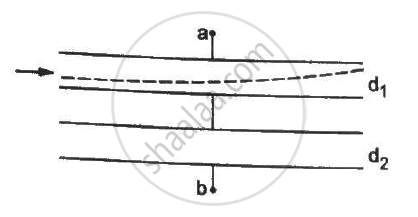
Find the potential difference `V_a - V_b` between the points a and b shown in each part of the figure.
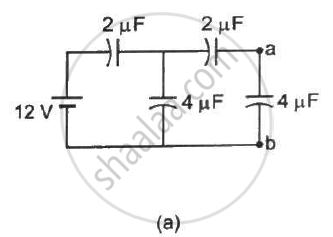
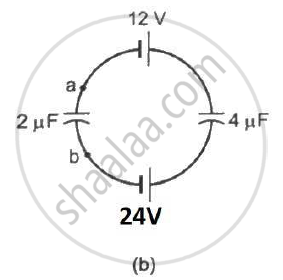
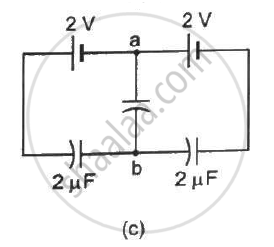
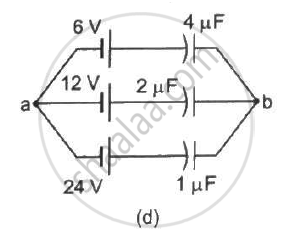
A charge of 1 µC is given to one plate of a parallel-plate capacitor of capacitance 0⋅1 µF and a charge of 2 µC is given to the other plate. Find the potential difference developed between the plates.
Two capacitors of capacitance 20⋅0 pF and 50⋅0 pF are connected in series with a 6⋅00 V battery. Find (a) the potential difference across each capacitor and (b) the energy stored in each capacitor.
What will be the potential difference in the circuit when direct current is passed through the circuit?
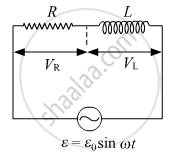
In circuits, a difference in potential from one point to another is often called ______.
A bullet of mass of 2 g is having a charge of 2 µc. Through what potential difference must it be accelerated, starting from rest, to acquire a speed of 10 m/s.
Can there be a potential difference between two adjacent conductors carrying the same charge?
